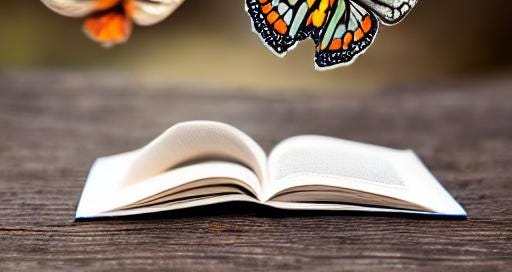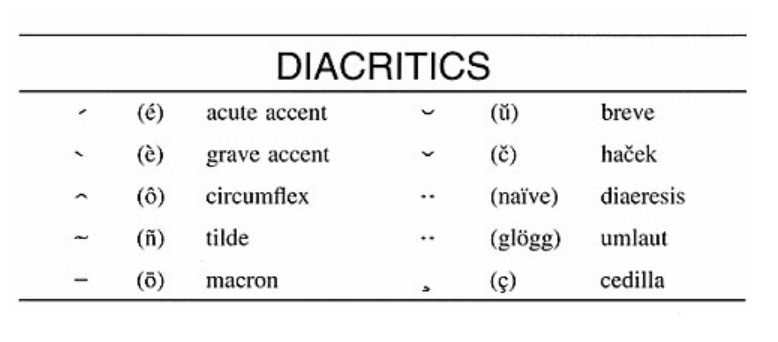Transformation, Study for Obedience, & Rubbing your Dog's Belly
Your Untapped Superpower with Tips from Chuang Tzu & Adam Sandler
A human superpower at your disposal—Transformation
“Just when the caterpillar thought the world was over, it became a butterfly.”
― Chuang Tzu
Children are amazing creatures. We were once that, too: amazing. And creature-like. In fact, we still are.
We are just children with “real” responsibilities, kicked a few years down the road.
We are children weathered by the world. That’s us. But we are still children at heart, deep down where it counts—and therein lies the seat of our superpower.
I can post pics of awesome homes for sale all day, and they will get some love. Usually by other real estate professionals. But post something your kid has created, or said, and everyone will pay attention. This is their superpower at work.
I recently posted on Facebook—
Vera: "Why do I have homework over break! It's called break!"
How very WORDINGHOUSE of her. She defines break, without really defining it; rather by showing us that it is not all that it seems, not a true break.
Friends liked it, laughed at it, commented. But mostly, they resonated with the simple honesty shared from the desk of a 10 year old.
A couple days later, breakfast-side, Vera was working before school on a piece of art work. I went over to check it out. No, it was actually homework. No, artwork. Uh …
It was a previous Math assignment on multiplying fractions, graded and returned. She scored an 86% and one of the problems she missed was 30 x 3/5. 😝
“fortunately, honey,” I said, “this will be the only time you ever have to deal with this problem for the rest of your life. Unless you take another math class. Or bake 30 batches of cookies all at once.”
But still—Ick. Yuck. NO FUN. And why!!??
This was surely something to be bitter about, something to hold onto, to repress, one more reason to become passive-aggressively angry at her teachers, her parents, her petulant brother.
But, instead … look what the child transformed her dreaded math assignment into:
Isn’t it beautiful?
Through this artistic act of ritual, Vera, 10 years old, laid something she did not like, and no longer needed, to rest by transforming it into something else—and like magic—a work of art.
Instead of hauling hate around inside her beautiful heart, she sent it off into the world, and in full color, homework—became a butterfly.
This is the superpower: to make butterflies 🦋🦋 🦋 out of the perfunctory fraction or figure.
We all need to become more comfortable letting this magical ability out of its cage when it’s most needed.
Forget not: your heart is still the heart of a child’s.
But it’s our own responsibility to take charge and make our own mathematically drab worlds into something colorful and creative, into something that flies.
A Booker Prize Finalist Worth it’s Weight—Study of Obedience, a novella
Last week on Nov. 26th, the prestigious Booker Prize winner was announced. The winner among 6 finalists was Prophet Song by Paul Lynch, which you better believe is on my shortlist to read.
Among the finalists was Study for Obedience by Sarah Bernstein. While she didn’t win the Booker, she did manage to take home $100,000 for the 2023 Scotiabank Giller Prize, Canada’s most prestigious award for fiction.
Here’s a little review: and, yes, the dead bird on the cover is some kind of omen.
For a literary work, Study for Obedience is an amazingly quick read. I digested it via Audible, read by the author, at normal speed, in under 4 hours.
While some reviewers have critiqued the novella for it’s minimalist plot and storyline, I found it much more about the inner movement of the unnamed narrator.
I recently re-read Dostoyevsky’s Notes from the Underground and will always love Kafka’s The Metamorphosis, so it goes without saying, action and plot aren’t necessary elements to win me over in the literary arena.
Study for Obedience is a contemplation on obedience, what dedication to others—when taken to the extreme—looks like, as expressed through the first person narrative of a young, intelligent, albeit unusual, woman.
The setting is a small town in a northern land (which is also unnamed, everything here is unnamed) with a people that speak a language the narrator does not fully understand.
She is a newcomer there, who just moved in with her eldest brother, a mysterious business man.
There is no dialogue. Which means for this book to succeed, it’s monologue must sweep the reader off his/her/their feet. For me, it succeeded.
This is a modern tale, with an old-time fairy-tale air—set in a world of Wordsworth meets Hitchcock.
It is a mystery and the reader must solve who the narrator actually is.
She explains how she learned from her family—through an act of osmosis—at an early age how to exist by giving herself completely over to others, by shrinking herself: nullifying her ego and her own needs.
Does this strange way of life lead to inner-peace? Or is it a result of childhood abuse?
These are questions not fully answered but left for the reader to decide.
The narrator’s voice is declarative, fascinating and crisp—and it serenely, always serenely, reveals the world around her, even as it collapses.
She holds it together in a way that seems at odds with the people and environment around her.
While her sacrifice for others—her brother in particular—is not overtly religious, there is something in her that leans towards a wayward form of saintliness. The way she becomes a magnet for others’ blame—a sacrificial scapegoat for their own misgivings and the befalling of unfortunate events.
***
The work explores the questions of:
Can a self live its best life when exclusively living for others?
Is total giving, total receiving? Is it even humanly possible? Is it healthy?
And possibly most intriguing theme the story hints at is:
Is this ultimately a tale of persecution? While seemingly a small detail, the narrator reveals that she is Jewish and her ancestors have been wiped-out. Possibly the townspeople are following in this discriminatory tradition, and it is more than that they simply don’t like her presence.
Something to do, always, anytime—Rubbing your dog’s belly
After years of catting around in the world, last year around this time, we finally said uncle and got the puppy. For the kids, right? It’s always for the kids.
On New Years day, Solomon and I rang in 2023 with a road trip south to pick up Roxanne Rhonda Miller.
Of course, we let the kids name her.
At the time, they were hot for the song Roxanne by the Police. Also, Solomon reminded us when we call her Roxy, that’s really an ode to Roxy Music, which is fine by me as I love the song More Than This.
But what this all leads to is the simple fact that the dog wants its belly rubbed. Perpetually, here into eternity.
Thank you, Adam Sandler, for celebrating this act of dignity towards dog with humor.
Here is the Herlihy Boy Dog-Sitting Service, a SNL skit we watch as a family in my house once or twice a year, as a prophylactic to ward off unnecessary sadness.
While Adam Sandler is hilarious, we all know he is really just a vessel for getting Chris Farley into the scene.
The comedic rhythm between these two funny guys, well—it’s healthy to laugh, so please watch it.
And you know damn well the dog likes it, too—just let it happen.
***
After last week’s newsletter, a friend reminded me that Adam Sandler has a lineup of great non-traditional holiday tunes. So here you go—a couple stocking stuffers a few weeks early.
Chanukah Song (live in Chicago)
The crowd is wonderful in this version.
Christmas Song
“Santa don’t like bad boys, especially Jewish ones. … so no toys for me.”😅
Weekly Word
If we can have non-traditional holiday songs, we can also have non-traditional Weekly Words.
SO we are going to get wordy this week and do a two-4-one.
While I was listening to Study for Obedience, the following sentence jumped out, with two words begging for definition. In this moment, the narrator reflects on her own inability to understand the local townspeople:
“Since I could not interpret the diacritic marks of the language of the country, the shape of the words in my mouth could only be an approximate homophonic translation.”
That’s a mouthful.
Diacritic- for this one, we will use a visual to define the word, taken from Merriam-Webster
I like the simple way this Guide to Deciphering Diacritics defines what they are:
“You know, the markings above and below letters.”
Homophonic-
of or relating to homophones
homophone: one of two or more words pronounced alike but different in meaning or derivation or spelling (such as the words to, too, and two)
For a word guy, homophones are brain and mouth candy, and there are a lot of them just waiting around to be discovered—
ex. adam/atom, ate/eight, ant/aunt, sole/soul, hair/hare, jeans/genes, pair/pear, stakes/steaks, bare/bear, flour/flower, muscles/mussels, chilly/chilli, meat/meet, moose/mousse, son/sun, leak/leek, gorilla/guerilla, Thai/tie, waste/waist, male/mail, Sunday/sundae, ferry/fairy, patience/patients, wrapping/rapping, you/ewe,
and the list goes on.
Deer Reed-er,
Thank ewe four reed-ing.
Eye Love Ewe,
Atom
If you think someone else needs a day brightener, recommend they check out WORDINGHOUSE rather than pop another pill or down that bottle of cheap whiskey.
Art is commenting on what’s going on around you in your life
- Al Jourgensen
⬇️⬇️⬇️









